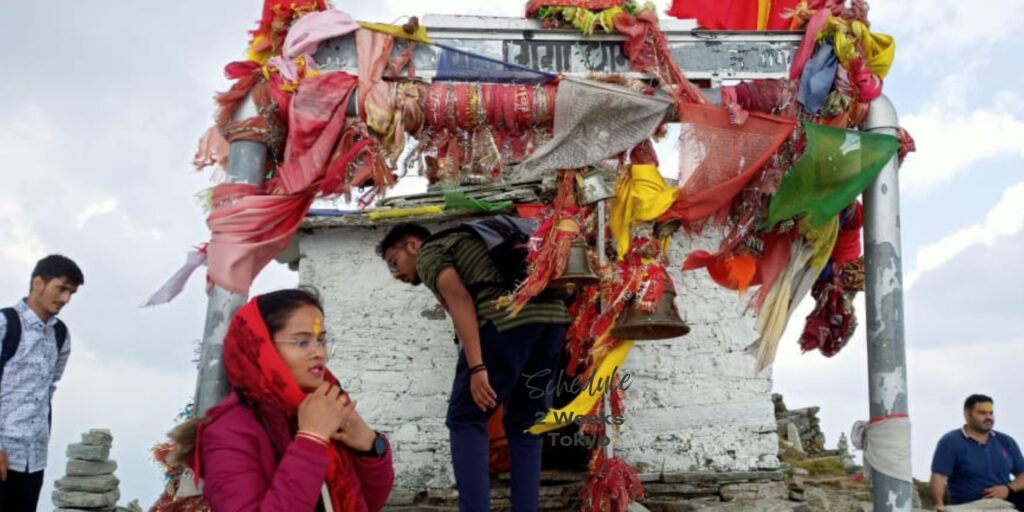
Tungnath, located in the Garhwal region of Uttarakhand, India, is renowned as the world’s highest Shiva temple. Perched at an altitude of 3,680 meters, this ancient temple is a significant part of the Panch Kedar pilgrimage circuit. The temple is surrounded by the majestic Himalayan peaks, offering a serene and spiritually uplifting environment for visitors.
Historical and Mythological Significance
Tungnath, believed to be over a thousand years old, is steeped in legends and mythology. It is said that the Pandavas, the heroes of the epic Mahabharata, built the temple to seek Lord Shiva’s blessings. According to mythology, after the Kurukshetra war, the Pandavas sought penance for the sins of war. Lord Shiva, avoiding them, took the form of a bull and hid in the Garhwal region. The place where his arms (Tung) were believed to have emerged is where the Tungnath temple stands.
The Trek to Tungnath
The trek to Tungnath begins from Chopta, a quaint and scenic hamlet often called the “Mini Switzerland of India.” The 4-kilometer trek is a moderate climb, suitable for both seasoned trekkers and beginners. The trail meanders through lush meadows, and vibrant rhododendron forests, and offers stunning views of the Himalayan ranges. The path is well-defined, making the trek a delightful experience.

Chandrashila Peak
Beyond Tungnath, at a distance of 1.5 kilometers, lies Chandrashila Peak, which translates to “Moon Rock.” Standing at an elevation of 4,000 meters, Chandrashila offers a panoramic 360-degree view of the Himalayan peaks, including Nanda Devi, Trishul, Kedar Peak, Bandarpunch, and Chaukhamba. The sunrise from Chandrashila is particularly mesmerizing, casting a golden glow over the snow-capped peaks.
Best Time to Visit
The ideal time to visit Tungnath is between April and November. The weather is pleasant during this period, and the trekking routes are accessible. Winter, from December to March, brings heavy snowfall, making the trek challenging but rewarding for snow enthusiasts.
How to Reach
- By Air: The nearest airport is Jolly Grant Airport in Dehradun, approximately 232 kilometers away.
- By Rail: The closest railway station is Haridwar, about 225 kilometers from Tungnath.
- By Road: Tungnath is well-connected by road. Buses and taxis are available from major cities like Dehradun, Haridwar, and Rishikesh to Chopta, the base camp for the Tungnath trek.
Pilgrimage and Spiritual Significance
For devout Hindus, a pilgrimage to Tungnath is not merely a journey of physical endurance but a spiritual odyssey steeped in ritual and reverence. The trek to the temple begins at Chopta, known as the “Mini Switzerland of India,” where lush meadows and dense forests create a picturesque backdrop for the ascent. The trek, although challenging, rewards pilgrims with panoramic vistas and a sense of accomplishment as they ascend toward the divine abode of Lord Shiva.
During the summer months, Tungnath becomes a bustling hub of religious fervor, as pilgrims from across India and beyond converge to pay homage to the deity. It is still, almost meditatively with the sound of sung prayer and the pealing of bells which all impregnate with the sense of piety and belief. It is believed that a visit to Tungnath absolves devotees of their sins and grants them the blessings of Shiva, fostering a profound spiritual transformation.
Ecological Importance
Beyond its spiritual significance, Tungnath serves as a beacon for environmental conservation in the fragile Himalayan ecosystem. The temple and its surroundings are home to diverse flora and fauna, including rare Himalayan species such as the musk deer and the snow leopard. Efforts to preserve the natural habitat around Tungnath have gained momentum in recent years, with local communities and environmental organizations working together to promote sustainable tourism and protect the region’s biodiversity.
Visitors to Tungnath are encouraged to tread lightly and respect the sanctity of this pristine environment, minimizing their ecological footprint while embracing the serenity of the Himalayas. The trek itself, although challenging, offers travelers an opportunity to reconnect with nature and experience firsthand the beauty and resilience of the world’s highest mountain range.
Cultural Legacy and Community
The legacy of Tungnath extends beyond its physical boundaries, encompassing the cultural tapestry of the Garhwal region and its indigenous communities. Local inhabitants, known for their warmth and hospitality, welcome pilgrims with open arms, sharing their traditions and stories passed down through generations. Festivals such as Mahashivratri and Navratri bring the community together in celebration, uniting people from diverse backgrounds in a shared reverence for the divine.
Artisans and craftsmen in nearby villages contribute to the temple’s upkeep, employing traditional techniques to maintain its architectural integrity. Their craftsmanship is evident in the intricate carvings and decorative motifs that adorn Tungnath, preserving a legacy of artistic excellence and cultural pride.
Conclusion
Tungnath stands as a beacon of spiritual enlightenment and natural beauty, offering visitors a glimpse into the heart of the Himalayas and the soul of Hinduism. Its towering peaks and ancient walls bear witness to centuries of devotion and architectural ingenuity, while its surroundings teem with biodiversity and ecological significance. A pilgrimage to Tungnath is more than a physical journey; it is a transformative experience that resonates with the sacred rhythms of nature and the divine.
As travelers ascend towards the temple, they are enveloped in the quiet majesty of the Himalayas, where every step brings them closer to the celestial realm of Lord Shiva. Tungnath invites all who seek solace and spiritual renewal to embark on a pilgrimage of the soul, forging a deep connection between humanity and the eternal forces that shape our world.

No responses yet